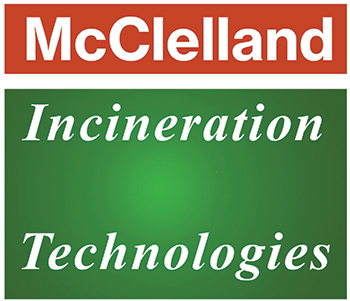 Introduction
Introduction
In the world of waste management, incineration is often at the center of debates and misconceptions.
Despite its proven potential as a sustainable solution for waste disposal, industrial incinerators continue to face myths that obscure their true environmental and operational benefits.
In this article, we’ll debunk common myths surrounding modern incineration — and shed light on how this technology supports sustainable waste management in India and around the world.
Learn more about industrial incinerator solutions at www.mcclellandindia.com — a trusted incinerator supplier in India, with projects across Mumbai, Gujarat, Maharashtra, and beyond.
Myth #1: Incinerators Are Major Contributors to Air Pollution
Reality: While all combustion processes emit pollutants, modern industrial incinerators are equipped with advanced emissions control technologies that dramatically reduce harmful emissions.
Technologies include:
✅ Scrubbers
✅ Baghouse filters
✅ Catalytic converters
These systems capture:
Particulate matter
Heavy metals
Other air pollutants
Modern incinerator facilities comply with stringent air quality standards set by CPCB and international benchmarks — ensuring that air emissions remain well within safe limits.
Myth #2: Incinerators Pose Health Risks to Nearby Communities
Reality: Properly designed and regulated waste-to-energy (WtE) incinerators have been shown to have minimal impact on public health.
Key safeguards include:
✅ Comprehensive emissions monitoring
✅ Strict regulatory oversight by CPCB and SPCB
✅ Continuous health risk assessments
Studies confirm that modern incinerators, when operated with state-of-the-art pollution controls, pose no greater health risk than other well-regulated industrial facilities.
Myth #3: Incineration Is an Outdated and Inefficient Waste Disposal Method
Reality: Far from outdated, modern incineration technology has evolved dramatically — delivering high efficiency and strong environmental performance.
Advancements include:
✅ Energy recovery systems → capturing heat to generate electricity and district heating
✅ Optimized combustion → maximizing energy output, minimizing residues
✅ Reduced land use → diverting waste from overcrowded landfills
Incineration provides a space-efficient, energy-generating alternative to landfilling — aligned with circular economy principles.
Myth #4: Incineration Contributes to Climate Change by Releasing Greenhouse Gases
Reality: While incinerators do emit CO2 during combustion, their net carbon footprint is generally lower than that of landfills — for several reasons:
✅ Diverts organic waste from landfills → prevents methane emissions (a far more potent GHG than CO2)
✅ Offsets fossil fuel consumption → by generating renewable energy from waste
✅ Supports climate change mitigation → by reducing total lifecycle GHG emissions from waste management
Waste-to-energy incineration plays an important role in India’s climate action strategy — especially when combined with recycling and waste reduction initiatives.
Conclusion
It’s critical to separate fact from fiction when discussing the role of incineration in modern waste management.
While incinerators — like any technology — must be carefully regulated and continually improved, they offer a viable, sustainable solution to:
✅ Reduce landfill dependence
✅ Minimize environmental harm
✅ Recover renewable energy
✅ Support a circular, low-carbon economy
By debunking myths and embracing an evidence-based approach, we can foster informed discussions and drive progress toward a cleaner, greener future for India and beyond.
Ready to explore industrial incinerator solutions? Partner with Mc Clelland Engineers Pvt. Ltd. — India’s trusted name in advanced, sustainable incineration technologies.

